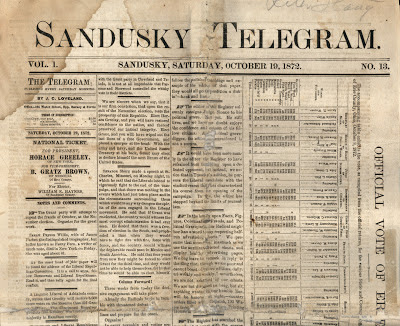More on how to dress at conferences.
Sometimes, we need to call out the bad stuff. Here’s one for bad figures in research papers.
I’ve often drawn lessons from comics to make better posters. Someone took it to the next level (hat tip to Craig McLean at the International Biogeography Society meeting in Miami):
Here’s some excellent thoughts on what makes a conference work. Hint: it has to be more than just information.
SlideRocket did a survey is about what people like about slide presentations and how they prepare for them, but has good information that would also be relevant to posters, too. One of the things that come through is that people love examples and templates; I'll see what I can do about that in the near future.
The “It’s not in my backyard” groan always drags, notes PZ Myers:
So don’t belittle cons if you can’t go. These events matter. It’s where community is built, where volunteers grow to play a bigger role in the progression of our goals, where everyone gets enthusiastic about some shiny new aspect of the subject.
And that’s absolutely why we have to do a better job of opening doors for everyone at these events. It’s the faces in the audience at the convention that will someday be leading the movement. It’s those faces that will go home afterwards and share the stories and get more people interested. And if we don’t make opportunities for participation by everyone, we will be limiting our growth.
So please, don’t complain. Your concerns are legitimate: a con may be too expensive, too far away, too inconvenient for you. You should instead try to think of ways to get one near you that you can afford and attend…and there are more and more of these things emerging all over the place.
New Scientist has a story about an analysis of Higgs boson gossip. I mention this because:
Unsurprisingly, the official CERN Twitter account got the most retweets during the monitored period. Second place was less predictable, however, going to Colin Eberhardt, a software consultant who still has relatively few followers.
Eberhardt managed to strike a nerve with one of his tweets - winning the prize for the single most-shared tweet. It read: “Possibly the biggest scientific discovery of our time, the #Higgs Boson, announced in glorious MS Comic Sans Font”, making reference to the odd choice of font used in the presentation from ATLAS, one of the two LHC experiments that discovered the Higgs.
This next is a poster for a conference (as in advertising it), rather than a conference poster (as in given at a conference), but still, I think it’s fair game for comment.
“T. rex riding a comet having an acid trip” was my reaction. Hat tip to Alex Witze and Brian Switek for bringing that to my attention.
Font nerds! There is a new version of the old reliable standby monospaced font, Courier. It’s called Courier Prime, and it’s free. You can download it here.















